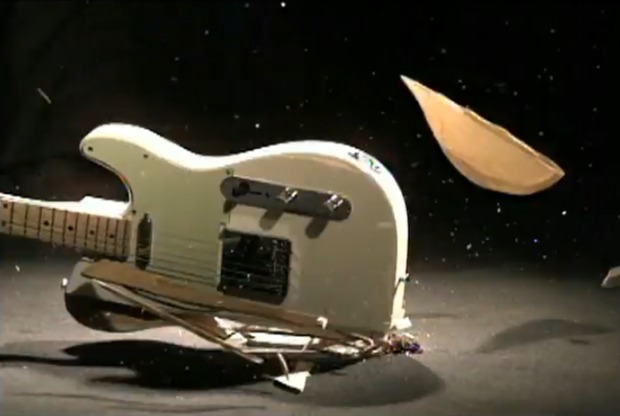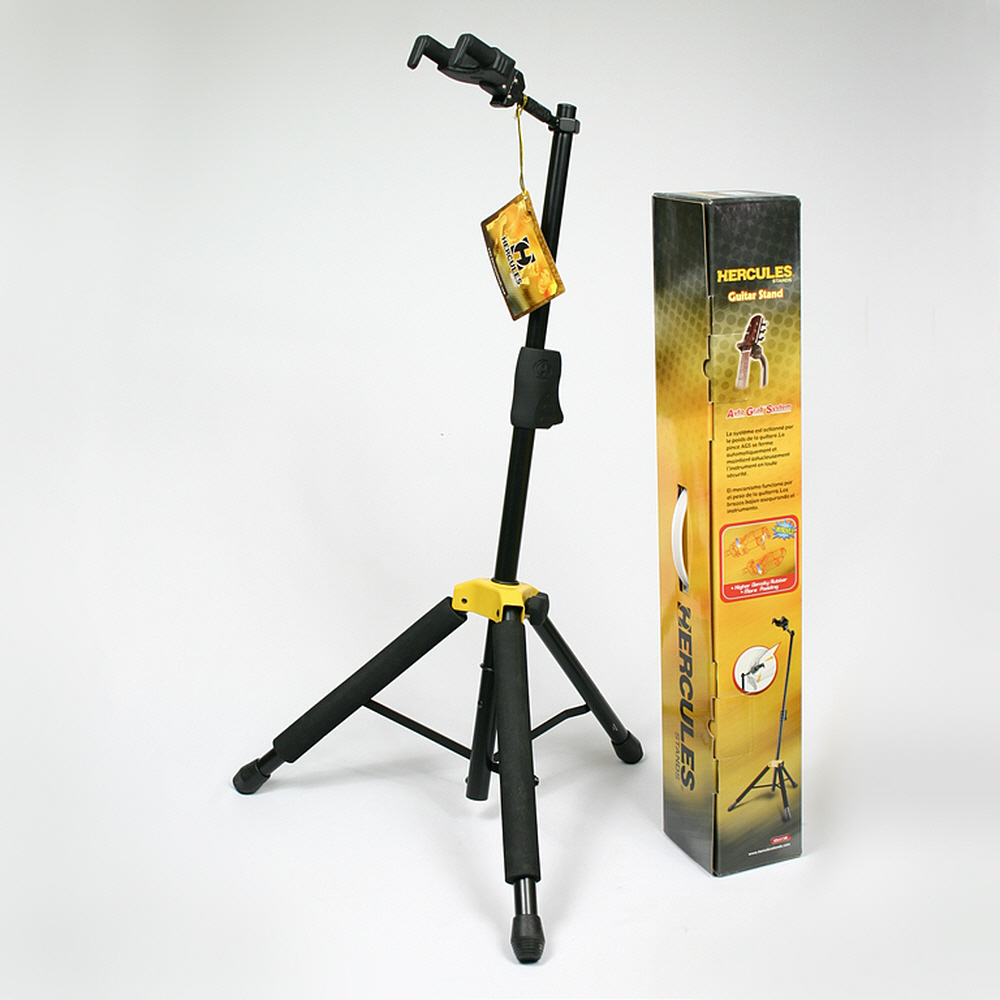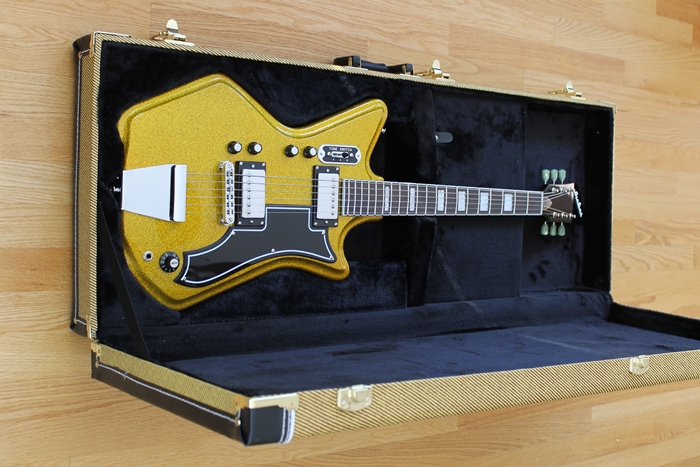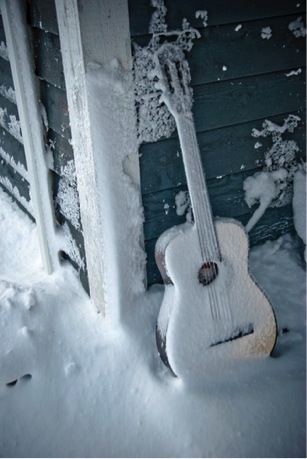“If it ain’t broke, don’t fix it!” There’s a hidden message in that phrase that applies to your guitar – don’t break it! It’s a terrifying thing when your pride and joy gets damaged. In many cases a guitar can be rendered useless, or end up sporting little dings and blemishes that you would simply rather them not have. It’s true that most things can be repaired, but often times the cost of repair is higher than the physical value of the instrument. So once again, in order to avoid expensive trips to the luthier and to keep your guitar looking and playing like new, your best bet is to not break it, and prevent damage before it happens. Today I’ll outline my top 5 tips for keeping your guitar free from harm.

1. Know your Tech / Luthier
Believe it or not, most (or at least a large portion) of the damage and wear done to a guitar occurs on the very bench it is being repaired or set up on. It is extremely important that the person who works on your instrument has a good track record, keeps a clean work-space, and knows what they’re doing. Surface scratches can appear from someone slipping with a screwdriver, leaving string clippings and fret filings behind on the workbench, or by restringing a guitar carelessly. Electronics can be ruined with improper use of a soldering iron, frets can be left in bad condition after a leveling or dressing.. and the list goes on. The list of things that can be done wrong is just as long as the list of things that can be done right.
When you are looking for someone to work on your instrument, pay attention to testimonials from other clients. Then you should physically meet the tech, and ask to see where they would be working on your instrument. If everything checks out, then you’ve found the right person. Finding and maintaining a relationship with a good tech is the first step in keeping your guitar looking, sounding, and feeling great.
2. Don’t Let it Fall!
Let’s face it… not all guitar straps and strap buttons are created equal. I’m sure we’ve all experienced catching a guitar that has come loose from one end of the strap at some point of our playing career. Now imagine what happens if that strap came loose while your hands are in the air clapping, or just after you throw the guitar around your waist for a spin…

…Yeah. Either your guitar or someone in the audience is going to get a pretty serious dent. If you’re going to play live, it’s important that you can rest assured that your guitar is secure to your body. Investing in a good quality leather guitar strap is never a bad idea. If it’s hard to loop the strap ends around the strap buttons, then you know it’s going to be just as hard for it to come off. Even still, these leather straps find a way of slipping off certain buttons. Strap locks are a great work around for this. Simply buy a set, and replace your current strap buttons with these and you’re pretty much guaranteed that your guitar isn’t going to go anywhere.

Some guitars don’t have a strap button on the upper portion of the body or neck, and are intended to be worn by tying one end around the headstock, underneath the strings. If you prefer using a regular button-to-button strap, you’ll need to install a second strap button. In this instance, it’s vital that you install the piece where the screw is going to have enough solid wood to bite into. It’s a good idea to contact the manufacturer to find out the best spot to do this, or to go back to that handy dandy tech you met by following tip number 1!
3. Don’t Let it Fall #2!
Of course, your guitar won’t always be strapped around your body. When it’s time to put it down between songs, or to stand it up at home, you’re going to want to have a proper stand for it. I personally learned my lesson years ago, when I stood my Les Paul up against my amp during practise. Not five minutes passed before hearing a loud “smack!” and looking in sheer horror to see that the head-stock had been knocked right off of the neck. Getting a stand that firmly holds your guitar in place is a ~$30 way to potentially save you a few hundred dollars down the road, and spare you the grief of thinking “my guitar will never be the same”.

Aside from the decreased risk of damage, having a stand holds your guitar in a much better way than laying it flat down. Gravity works wonders on your guitar, especially when you consider that that long, thin piece of wood known as the neck is under 120 lbs of string tension to begin with. Try this: lay your guitar flat on your lap and check its tuning. Now hold it in playing position and do the same. You might just notice a difference, and that’s all thanks to gravity. Due to this, the best way to display or place your guitar is in playing position or straight up and down.
4. Protect it
This one might seem obvious, but for some it just doesn’t register. I’ve seen people cross through a parking lot during a torrential downpour with their exposed guitar in hand – the kicker is they’re bringing it to be worked on. In their defense, they probably just don’t know any better – perhaps it feels like wearing a leather jacket out in the rain. “I probably shouldn’t do this.. but what’s the worst it could do?” Well, the answer is a lot. The guitar manufacturer spent a lot of time getting a ton of moisture content out of the wood before putting it together, the last thing you want to do is put it back in!
The rain is the least of your troubles, though. If you’re doing any travelling with your guitar, you’ll want to have it packed into a good guitar case. A hard-shell that fits your guitar is your best option (you don’t want your instrument sliding around on the inside), but there are some nice gig-bags out there with good padding that keeps the guitar safe, and makes it easier to carry.
5. Keep it Acclimated
As I mentioned previously, various steps are taken by guitar builders to get the wood of your guitar to a certain moisture content level before putting it together. So if you have a guitar that was built on the other side of the planet, the temperature and humidity is likely a tad different. Your guitar is greatly impacted by differences in climate, so measures should be taken to make sure your guitar doesn’t experience as much of the change going on outside as everything else is.
Drier climates can lead to sharp fret ends and wood cracks, while too much moisture can lead to tarnishing of frets, wood swelling, high action and loose components. You can get mini guitar humidifiers that can be stored inside your guitar case, or some that fit inside the sound hole of an acoustic guitar, or just get a regular humidifier to use in the room that you store your guitar in. You can contact your guitar’s manufacturer to find out what they recommend you keep the relative humidity at, but as a general starting point I’d aim for 45-55%. If your guitar has had some serious exposure to moisture, then you may need to go the opposite route and use a de-humidifier.
So there you have it; a few examples of things you can do to keep your guitar in tip-top shape. Remember: don’t break it! If you’re questioning the way you’re putting your guitar down, how you’re holding it, storing it, or having it worked on, chances are you’re risking it!



As someone who has developed emotional bonds with certain guitars, these are all horrifying pictures. They’re the perfect choice, don’t get me wrong. But the guitar in the snow, the one flying through the air, the one being smashed, they are all so cringe-worthy. It’s a good way to get people to follow your advice.
That’s true that straps aren’t always up to par. I’ll have to check mine out so I don’t drop my guitar. Keeping it in good condition is important to me. Acclimating it to your climate is a good idea as well. I should look up where my guitar is from.
As far as the humidity requirements, I would like to add that you should change environmental conditions slowly. Abrupt temperature and/or humidity changes will mess up a guitar much quicker than keeping it at a constant 35%RH, which I personally think is the optimum. I have seen the effects of over-humidifing which doesn’t get as much discussion as too dry conditions. I once saw a Martin at Sam Ash sitting in 55%Rh that had mold inside the body. The problem was that the believed the setting on their thermostat rather than actually measuring the humidity. Turns out their RH was over 65%. That’s a pretty costly mistake. For reference I have been playing for 52 years and have several guitars that I personally maintain. I also calibrate environmental instrumentation for a living.
That picture of the guitar on the side of the house covered in snow makes me cringe. I play a little bit of guitar. Your point about making sure to get to know your tech or luthier was really helpful for me when I got my first guitar. He actually builds custom guitars from scratch. He could answer any question I had about components, care, and even other stringed instruments like basses an ukuleles. This is a great place to start and makes sense as to why you mad it the first point in your article.
I have to save for quite a while to buy my guitar, so I always make sure it’s in good condition. Some of my friends even thought I’m over protective when it comes to my guitar, but I just love it and treasure it too much!
Behind every awesome guitar player, there is one great luthier.
Keeping a good relationship with your luthier is key, especially if you have multiple guitars that you take care of it. The invaluable maintenance tips that you can get once you get past the “friendly” stage could be saving you thousands of dollars.
Great. Thanks for your perfect tips, Vince!!!
This is a great article for guitar safety. I found this article very useful Tips and tricks are very actionable. So I recommended this site to every guitar lover who actually care their favorite gadget.
Great info thanks. I also read that keeping your strings too tight can warp the neck and that that you should loosen them after playing but that seems like a lot of effort!
Hi, Thanks for sharing this blog post. Helpful information on guitars. Enjoyed reading this full article.
I got this website from my pal who informed me on the topic of this website
and now this time I am browsing this website and reading very
informative articles here.